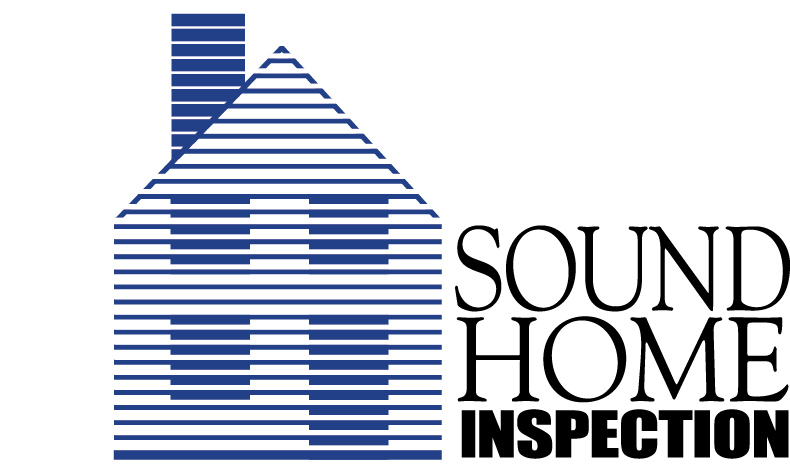Exterior
Home Inspection Exterior
Your home’s exterior is made up of your roof plus the material used on the sides of your home. This material varies by region and neighborhood. Common materials include wood shake, brick, vinyl laminate siding and stone.
Your home’s exterior needs to be more than just attractive. The exterior material, whether it’s siding, cedar shake, brick or stone, is what keeps your home sealed from the wind, rain and snow. The exterior components, along with the roof and drainage system, act together to keep the interior of your home warm, dry and moisture-free. All of the parts of your home’s exterior must be attached properly. If one piece fails, it ruins the integrity of the entire system.
To schedule your home inspection, call
(860) 445-1236 today.
Home Exterior Items Inspected
Want to learn more?
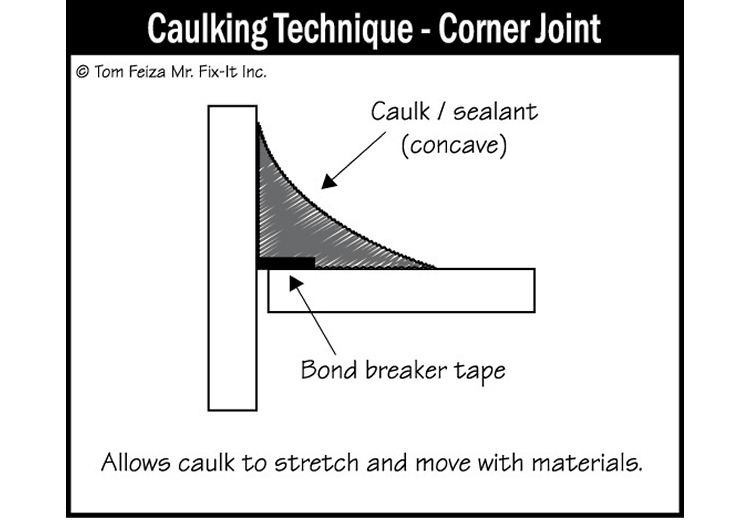
Corner Boards Inspection
Corner boards are the vertical boards at the exterior corners of your home that are both decorative and function as an anchor for siding. Corner boards are generally made of wood or vinyl material.
Like other exterior trim, corner boards can deteriorate more quickly than indoor trim because they are exposed to the heat, cold, wind, rain and snow. Corner boards that aren’t maintained properly can allow water to seep behind the adjacent siding and on into the inside of your house. Water inside the walls can lead to mold and mildew problems.
Corner boards should be large enough to cover the edges of the siding on both sides, helping to seal them from the weather. The inspector will also look to make sure that the corner boards are solid and secure and that the joints between the boards and the siding are properly caulked or otherwise sealed.
To schedule your home inspection, call
(860) 445-1236 today.
Decks, Balconies, Stoops, Steps, Areaways, Porches, Patio/Cover and Applicable Railings Inspections
Decks and other outdoor elements add beauty and interest to your property while giving you designated, exterior rooms where you can enjoy being outdoors.
Inspecting decks and other outdoor spaces and accessways is important to make sure that these elements are safely constructed. After all, balconies hang in the air and decks are often suspended over sharp grades. All of these elements also need to have secure handrails and barriers to keep residents and guests from tripping or stumbling over the side. In addition, a good inspector will inspect these elements for cracks in concrete, rotting boards and/or rusting ironwork.
To schedule your home inspection, call
(860) 445-1236 today.
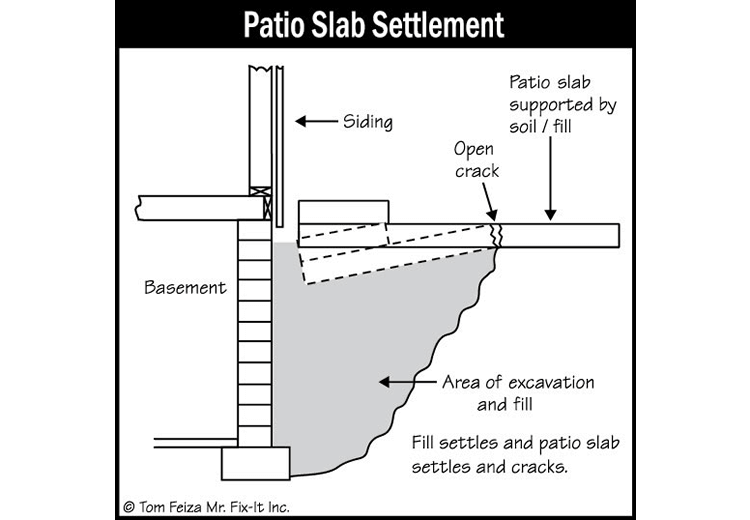
Want to learn more?
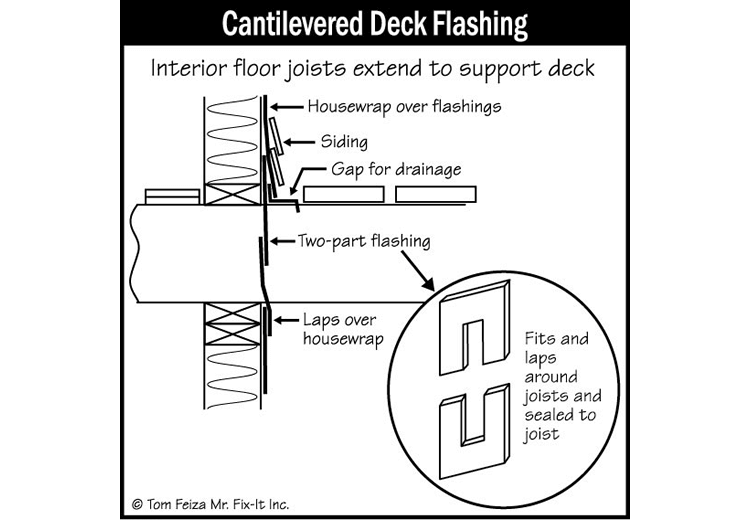
Deck Attachment Inspection
The deck attachment is where the deck comes together with the house. This system includes the deck ledger board, flashing and the deck joists. The ledger board is attached flush against the house with flashing behind it to protect the house from water damage. The deck joists are attached at right angles to the ledger board.
Deck attachments can have a couple of problems. If the flashing is absent or improperly installed, rain water can seep between the deck and the house causing water damage to both. Deterioration or undersized metal joist deck hangers can be a major safety issue. In addition, a deck that is not properly secured to the house can be a safety hazard.
To schedule your home inspection, call
(860) 445-1236 today.
Deck Flashing Inspections
Deck flashing refers to thin metal pieces that fit between deck sections and between the deck and the main dwelling to divert rain water and prevent it from collecting at the seams. Flashing can be made of stainless steel, copper, aluminum or zinc.
It’s important that the deck flashing be installed correctly to keep water from pooling at the seams between the deck and the house. If this happens, the boards of the deck near the seam and the exterior siding where it meets the deck can be compromised. This can cause the boards and the siding to deteriorate rapidly, ruining the appearance and the integrity of the deck.
To schedule your home inspection, call
(860) 445-1236 today.
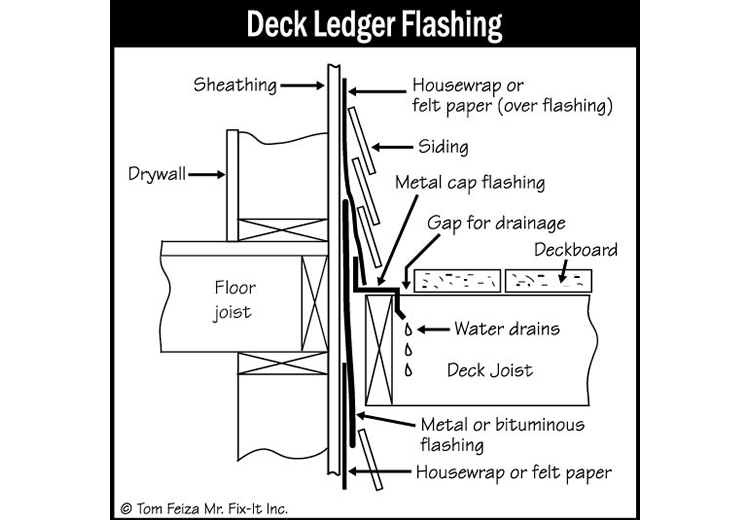
Want to learn more?
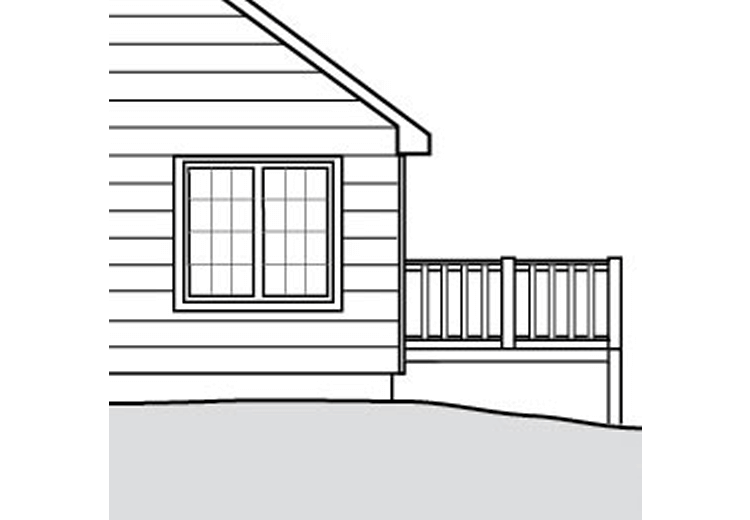
Deck Handrail Systems Inspections
Deck handrail systems make up the sides of the deck, so that kids, pets and adults don’t fall off of the deck. These systems are often made of wood, but they can also be of vinyl, stainless steel or a combination of wood and stainless steel. They can be made of manufactured panels or custom-made.
To make sure the system is safe is the main reason for inspecting a deck handrail system. These systems need to be sturdy to prevent someone from slipping off of the deck if they stumble onto the railing. The railings also need to be spaced correctly so a child can’t get stuck between them. Lastly, the different sections of the handrail system need to be securely attached so grabbing one rail doesn’t bring down the whole system.
To schedule your home inspection, call
(860) 445-1236 today.
Exterior Handrails Inspections
Exterior handrails are the handrails attached to your front or back steps or sometimes along a winding garden path. These railings are often made of wood or wrought iron, but can be of steel, aluminum or even plastic.
Handrails are important to keep people from tripping on your steps or falling off of the side. Handrails need to be a proper height and be supported by posts that are close enough together that a child wouldn’t be in danger of getting caught between them. In addition, exterior handrails need to be installed so they are sturdy and not wobbling or at risk of coming detached from the posts.
To schedule your home inspection, call
(860) 445-1236 today.
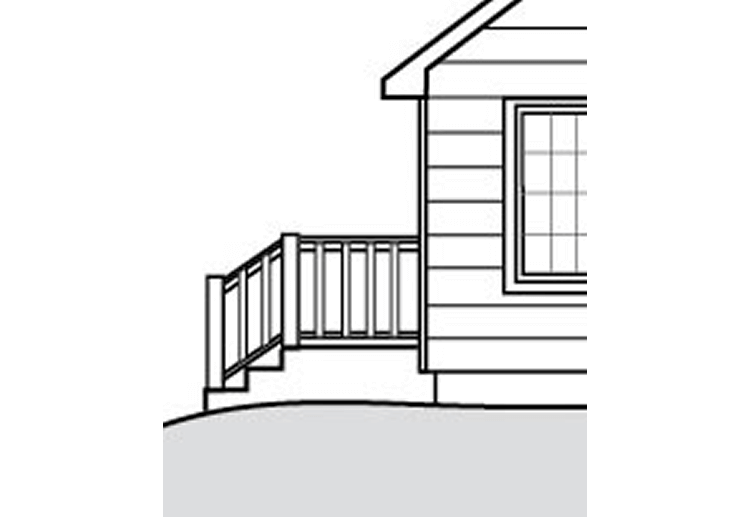
Want to learn more?
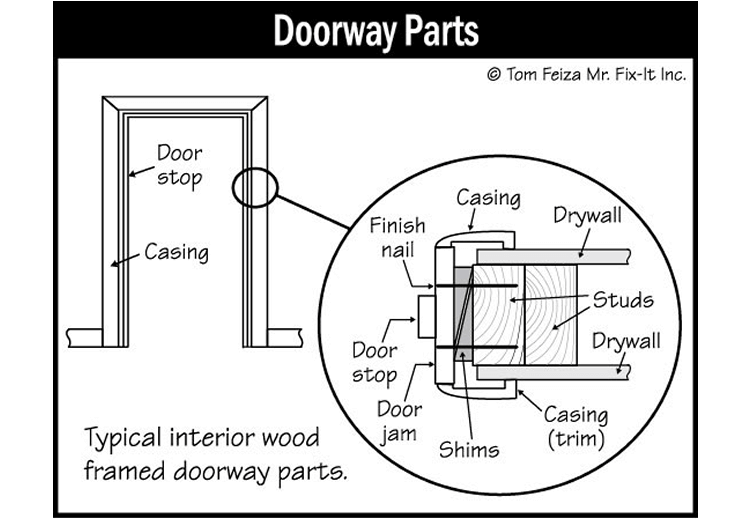
Exterior Door Trim Inspections
Door trim makes up the decorative pieces that surround your doors. Door trim is usually made of wood, but may also be fiberglass. It can be simple or ornate, depending on your taste and decorating style.
Door trim looks attractive and helps to fit your door snugly into the door frame. Without properly-installed door trim, your exterior door is likely to develop gaps, allowing the heat from your home to escape, wasting energy and giving you unnecessarily-high energy bills.
Door trim is also important for keeping moisture away from your walls and the interior of your home. Improperly-installed door trim can allow rain water to run behind your siding, eventually finding its way into your walls.
To schedule your home inspection, call
(860) 445-1236 today.
Eave, Soffit and Fascia Inspections
Eaves are the edges of the roof that overhang your building. Soffits are the underneath portion of the eaves that face the ground. A soffit is a separate piece from the roof itself. Fascias are the narrow, vertical pieces that connect the eaves and the soffits.
Eaves, soffits and facias are all integral parts of your home’s roof drainage system. Eaves, because they hang away from the structure, help to direct rainwater and other moisture away from your home. Soffits and fascias fit snugly together with the eaves to prevent the water from doubling back under the eaves and into your home. Eaves, soffits and facias that are improperly installed and sealed can cause moisture and rain to seep into your attic, leading to mold and mildew problems.
To schedule your home inspection, call
(860) 445-1236 today.
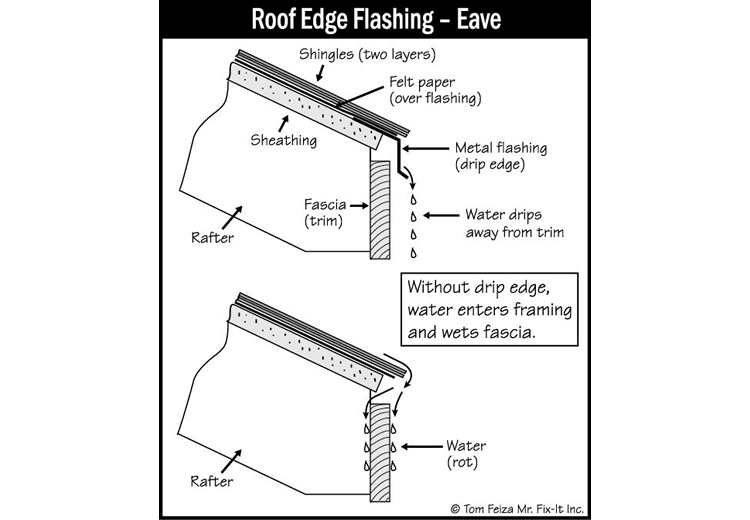
Want to learn more?
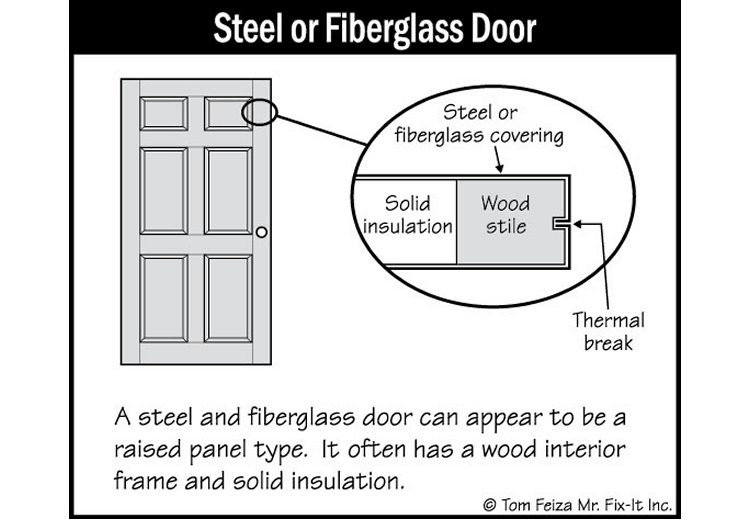
Exterior Doors Inspections
Doors are the entrances and exits of your home. They come in a variety of shapes and sizes. Popular styles of doors include solid wooden doors, sliding glass panel doors, hinged (or French-style) patio doors and storm doors. Exterior doors can be made of wood, steel, fiberglass or glass. Door frames are generally made of wood.
Exterior doors are not only attractive and allow you an easy way to enter and exit your home. They also act as a barrier between the elements and your living space. Improperly installed, doors can threaten your security and create gaps where the heat from your home can escape, wasting energy and increasing your heating bills. Gaps in the door frame can also allow moisture to enter your walls, something that could lead to mold and mildew problems.
To schedule your home inspection, call
(860) 445-1236 today.
Exterior Hose Bib Inspections
The exterior hose bib is the outside faucet that you attach your hose to in the summer to water your garden or fill the bird bath. The hose bib is usually situated one to two feet above the ground and is linked to plumbing pipes and a valve inside the house.
An exterior hose bib can have a couple of problems. The pipes leading from the bib should lead away from the house, not follow the outside wall, to avoid freezing in the winter. In addition, the opening for the hose bib should be tightly sealed and not have any gaps that allow heated air to escape.
To schedule your home inspection, call
(860) 445-1236 today.
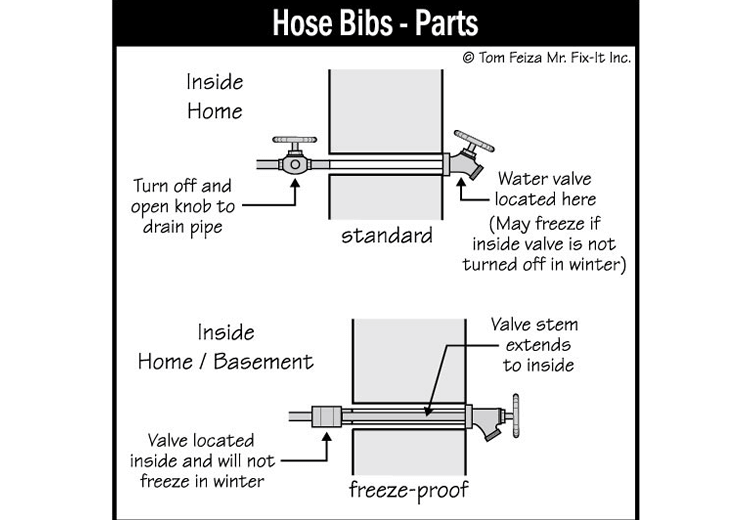
Want to learn more?
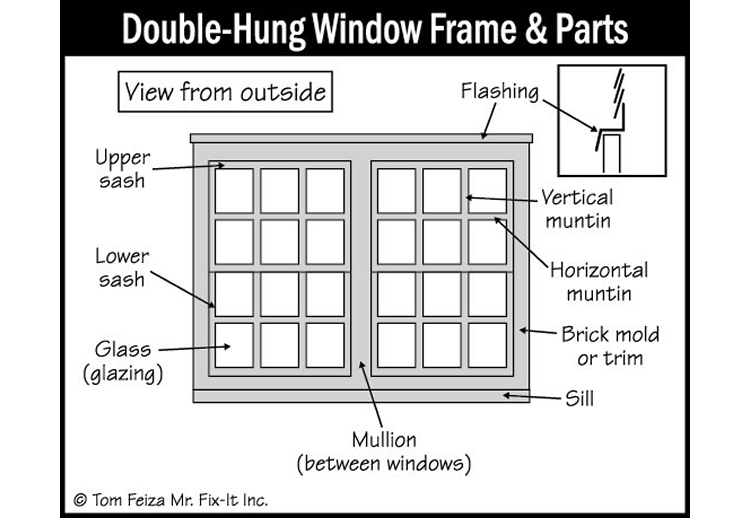
Exterior Trim Inspections
Exterior trim refers to the decorative boards that go around your windows and door, the decorative molding under the eaves and corner boards that anchor the corners of your home. Some modern homes have very little exterior trim. Other vintage homes, such as Victorian-style homes, have an abundance of exterior trim. Most exterior trim is made of painted fir or pine.
Since it is exposed to the elements 365 days a year, exterior trim can take a beating. Swelling from the heat and contraction in the cold can cause the paint to crack and chip, allowing water and insects to penetrate the boards. Trim should generally be scraped, sanded and painted every two or three years to keep your home looking sharp and to prevent having to replace the boards.
To schedule your home inspection, call
(860) 445-1236 today.
Exterior Flashing Inspections
Flashing is thin sheet metal that is attached to the sides of the house around the corner boards, windows and other openings. These metal strips divert rainwater and melted snow from the openings and send it away from the house. Flashing is often made of aluminum, stainless steel, zinc, lead and even copper.
Flashing is an important part of a home’s exterior. Without flashing, rainwater can get underneath your siding and between your windows and the trim, causing the wood on your home to deteriorate and possibly leading to water damage inside your home. Your home inspector will check to make sure that the flashing on your house is properly installed and in good condition.
To schedule your home inspection, call
(860) 445-1236 today.
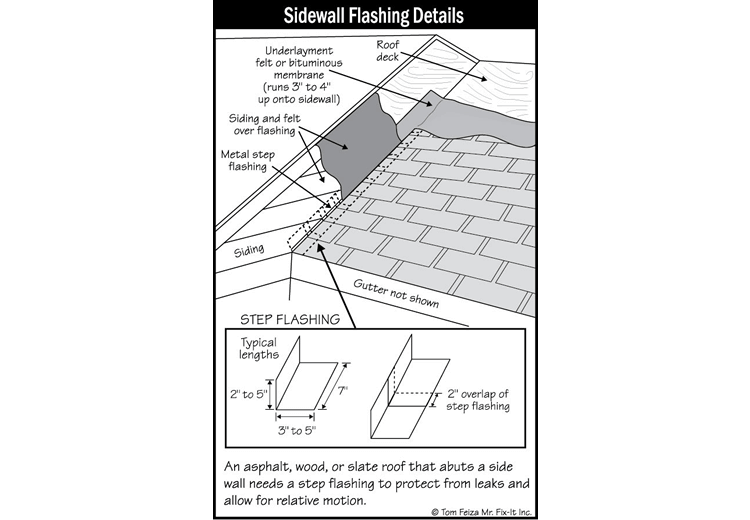
Want to learn more?
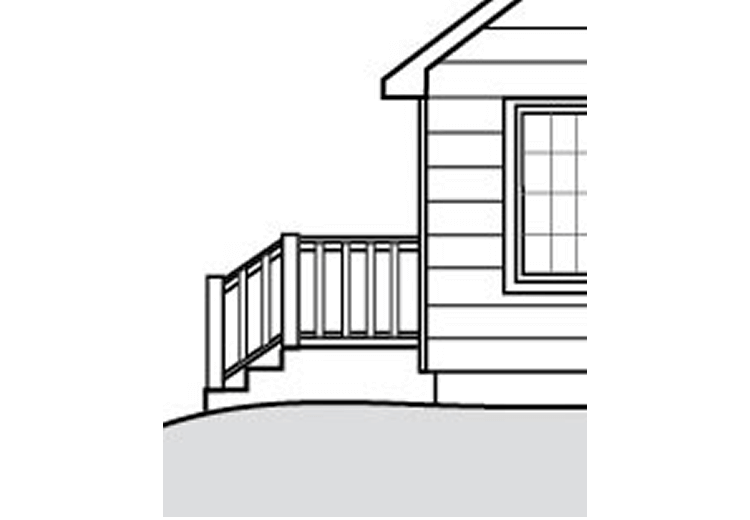
Exterior Stairs Inspections
Stairs are the collection of treads (the flat portion) and risers that span the vertical distance between your walkways and exterior doors or that allow easy access to garden paths, decks and patios. Exterior stairs can be made of wood, stone, brick or concrete. Individual treads can be straight or rounded.
It’s important that stairs be properly constructed for both safety and durability. Exterior steps that don’t allow for drainage can lead to accumulating ice — a safety hazard and potential liability issue. In addition, a set of stairs without ample support and footing will likely settle and shift over time, creating both a safety and a functional problem.
To schedule your home inspection, call
(860) 445-1236 today.
Vegetation, Grading, Drainage, Driveways, Patio Floor, Walkways and Retaining Walls Inspections
Plants, patio slabs, walls, drives and other hardscape elements all affect a property’s drainage system. Large vegetation, such as trees and large shrubs, should not be planted so close to the house that the roots will damage the foundation over time.
Grading should be angled away from the foundation of the house, so rain water and snow don’t pool at the base of the house where it can get into the walls. Driveways, patios and walkways, too, should be constructed so that water runs down them and away from the house, not towards it.
Retaining walls can make an attractive landscape, but these walls should have drainage built in so that the pressure from rain water doesn’t knock down the wall or allow water to back up towards the house.
To schedule your home inspection, call
(860) 445-1236 today.
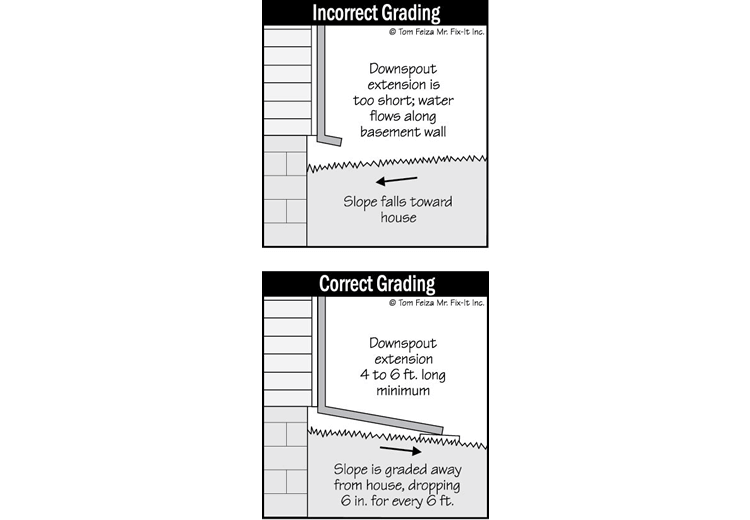
Want to learn more?
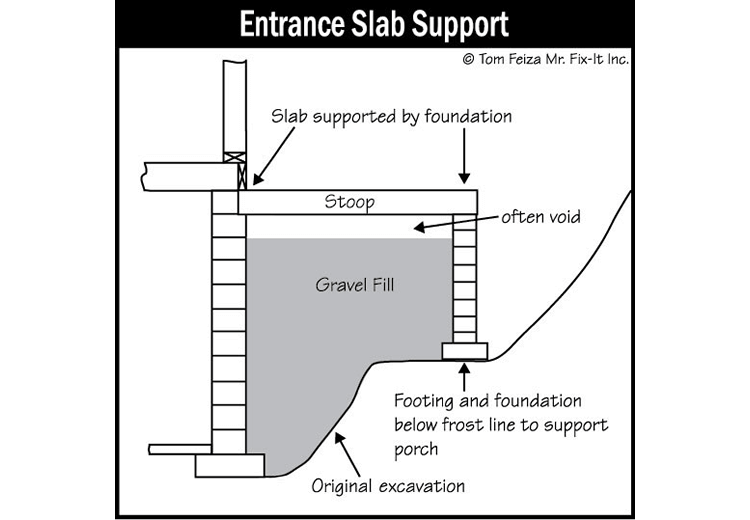
Exterior Flagstone Inspections
Flagstone is a term used to refer to any flat stone. Such stones are frequently used in landscaping and to make outdoor walkways and paths.
Flagstones, if improperly set, can cause a safety and tripping hazard. Even if installed correctly, time, tree roots and shifting earth can cause an individual stone to jut out or sink in from the rest of the walkway, creating a safety issue. Drainage can also be a problem with exterior, flagstone walkways. If the entire walkway doesn’t slope away from the house, ice can easily form on the walkway, making winter walking dangerous. If the walkway includes steps, the inspector will check to see if these are a standard, safe height and width.
To schedule your home inspection, call
(860) 445-1236 today.
Exterior Grading
Grading refers to leveling the soil or creating a slope of a specific angle on a property. Grading is usually done with special earth-moving equipment called graders.
Grading is important for several reasons. For one thing, successful grading slopes slightly away from the foundation, allowing water from the downspouts to drain away from the structure. Grading is also used to create smooth and vehicle-friendly driveways and parking slabs as well as a level base for patios and decks. In addition, grading can be used to create visual interest in landscaping and flower beds, and to provide a smooth base for walkways around in-ground swimming pools.
Without adequate grading, rain water and moisture can accumulate at the base of your foundation, causing it to crumble and/or rot over time.
To schedule your home inspection, call
(860) 445-1236 today.
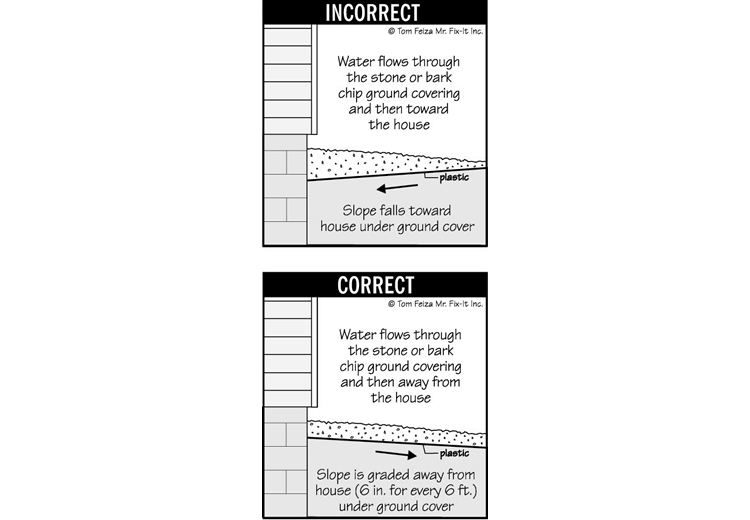
Want to learn more?
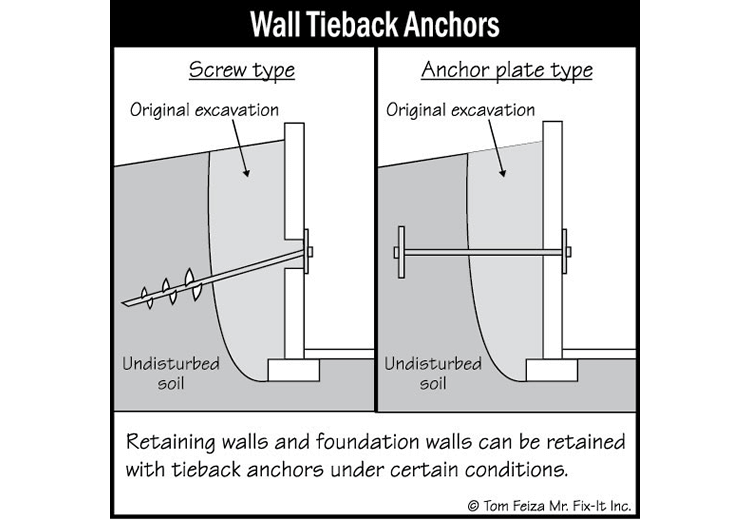
Retaining Wall Inspections
The term retaining wall refers to a free-standing structure used to prevent soil from shifting on sloping lots. These are commonly used in landscaping to create terraces, in the front of a property where a road cuts through it. A retaining wall can be made of stone, bricks or concrete.
A retaining wall helps to keep the soil from shifting and helps to stop erosion. Without a retaining wall, the ground could start to shift, jeopardizing your home and foundation. Run-off from a slope without a retaining wall can also cause ruts in your landscaping. A well-designed retaining wall is anchored at the base or in the middle of the wall to prevent slippage. Such a wall also has a drainage system to prevent pressure from building up behind the wall.
To schedule your home inspection, call
(860) 445-1236 today.
Garden and Landscaping Trim Inspections
Garden and landscaping trim includes the materials you use to edge your walkways and garden beds. This can be wood stumps and railroad ties, bricks, stones or even oyster shells.
Inspecting the garden and landscaping trim is a good idea since some of these materials can harbor insects that can move on to invade your home. Wood pieces are especially vulnerable to insect infestations. Bricks and other border materials that have shifted out of alignment can also be an early sign of a shifting foundation and bears further investigation.
To schedule your home inspection, call
(860) 445-1236 today.
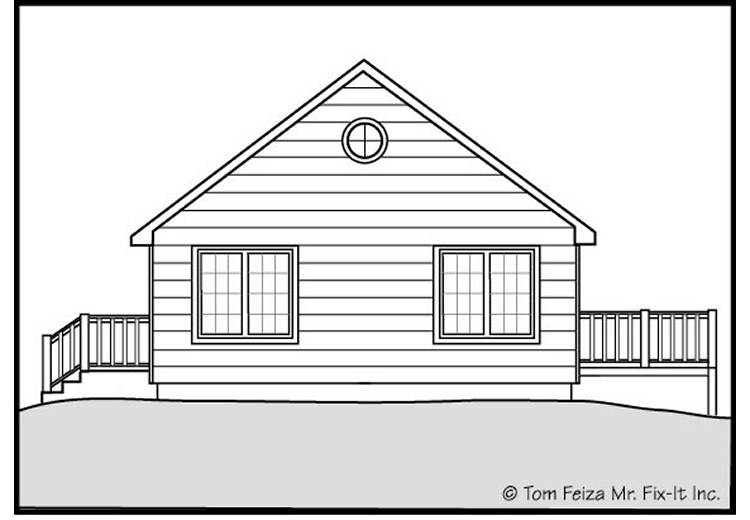
Want to learn more?
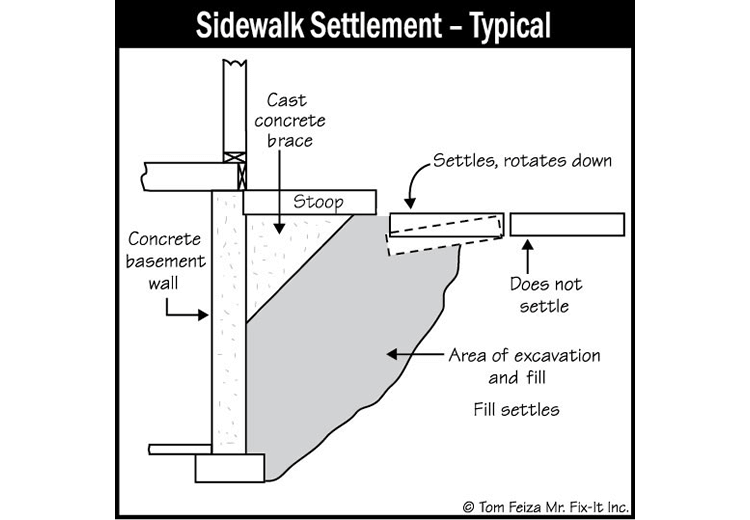
Exterior Walks Inspections
Walks are the pathways that lead to and from your front and back doors as well as garden paths that meander through your flower beds or around your garage. Walks are commonly made of poured concrete, stone, slate or brick. Garden paths are also made of round concrete “stones,” mulch and even recycled tires.
Tree roots and settling earth can wreak havoc on the walkways around your house. Bricks and stones that, over time, jut out or cause an indentation can be a tripping hazard. In addition, concrete walks that are poured incorrectly will crack with temperature changes throughout the year, another potential tripping hazard. Some walkways have inclines or steps that require handrails. A home inspector will also make sure these are secure and installed at the proper height.
To schedule your home inspection, call
(860) 445-1236 today.
Exterior Wall Cladding, Flashing and Trim Inspections
Wall cladding refers to a variety of decorative coverings, typically used on the exterior on buildings. These include faux brick or stone facades as well as metal sheeting. Wall cladding is generally not structural. Wall cladding could be made of vinyl siding, wooden shingles, wooden clapboards or masonary brick.
While wall cladding can give a home a unique look and update an existing home without tearing down walls, wall cladding presents some unique challenges. Some types of wall cladding, such as faux brick and masonry, are porous and can allow water to seep into the wooden frame behind the cladding. Similar to siding, the seams where the cladding meets the rest of the house need to be securely sealed (caulked) so that moisture doesn’t enter the walls.
To schedule your home inspection, call
(860) 445-1236 today.
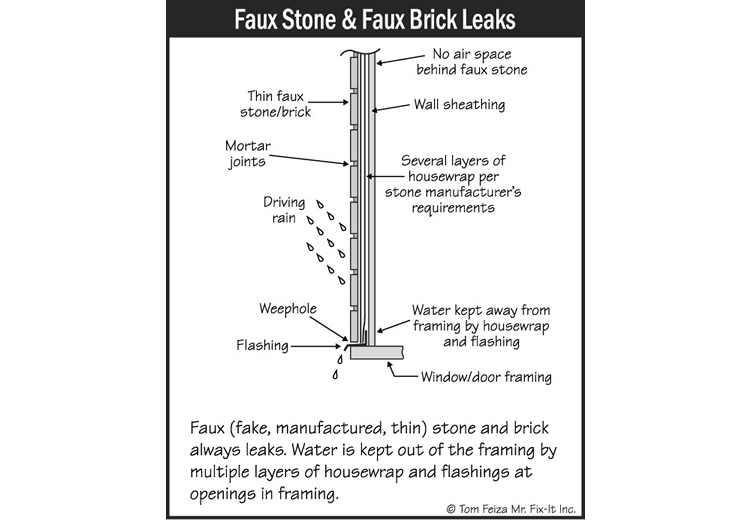
Want to learn more?
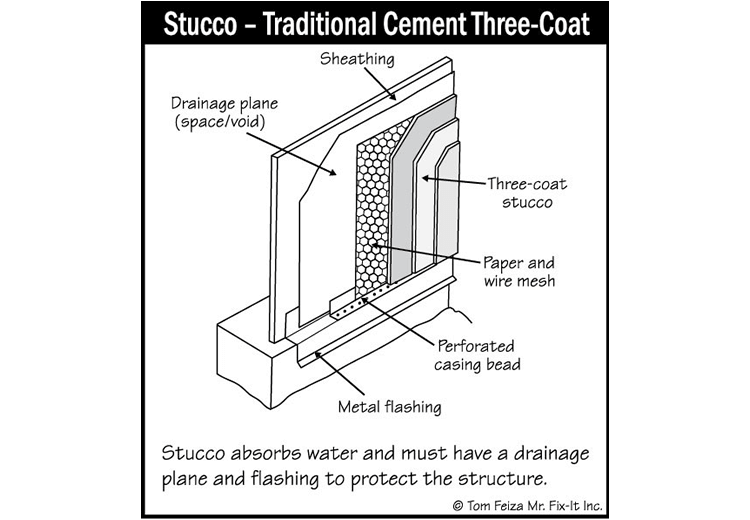
Wall Finishes Inspections
Exterior wall finishes include paint, wood shake, siding, brick and faux stone or brick.
Inspecting a home’s exterior wall finishes can reveal signs of maintenance and structural issues. A wall with split shingles or peeling paint can indicate water problems. In addition, siding that has come away from the side of the house can be a sign of water penetration or structural issues. Loose or cracked mortar in brick or stone can also lead to water getting inside your house. A home inspector will check your home’s exterior finishes to make sure that they are not only attractive, but doing their job to keep your home well-sealed against the elements.
To schedule your home inspection, call
(860) 445-1236 today.
Exterior Window Inspections
Windows are framed panes of glass inserted in the exterior walls of your home. Windows come in a variety of shapes and sizes. Common are double and single-hung windows that open from the bottom and/or top; transom windows, often used above doors; casement windows that open with a crank; and bay windows that jut out from the house. Window frames can be made of wood, aluminum or fiberglass.
Windows do more than just light up your rooms and add architectural interest. As part of the exterior of your home, they help to keep out the wind, rain and snow. Improperly-installed windows can lead to gaps that allow heat to escape your home, wasting energy and increasing your fuel bills. A bad window installation can also cause moisture to seep into your walls, leading to mold and mildew problems.
To schedule your home inspection, call
(860) 445-1236 today.
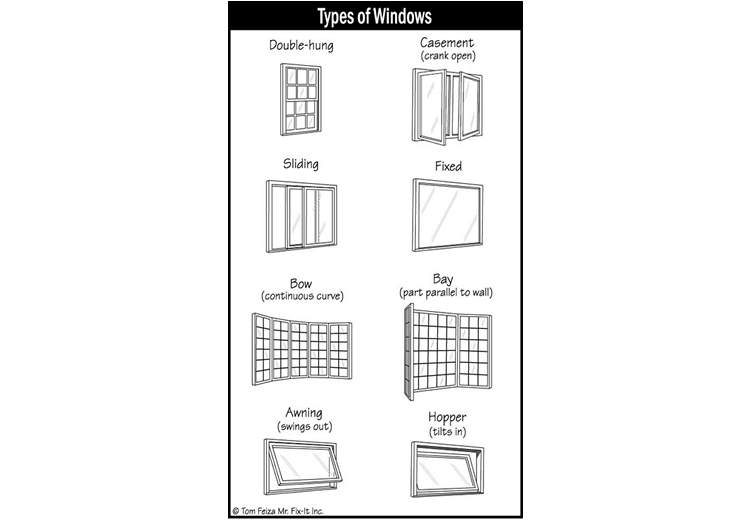
Want to learn more?
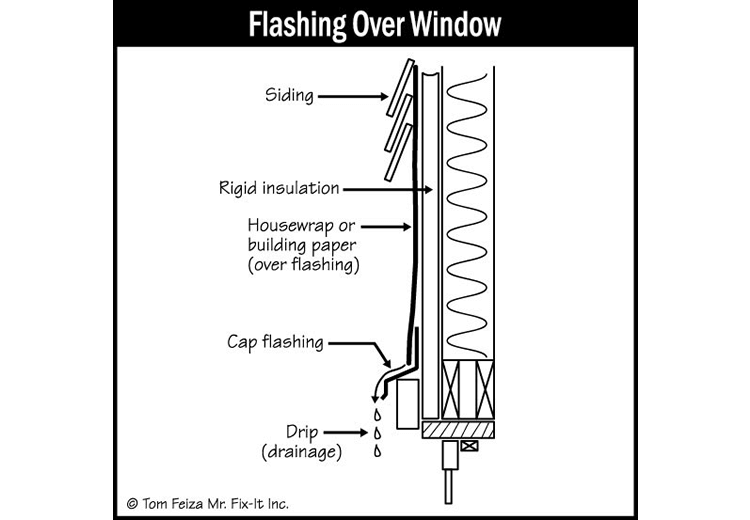
Window Flashing Inspections
Window flashing is waterproof, metalized plastic trim installed around windows and skylights to prevent water and moisture from entering your home. Since flashing is installed underneath the trim and/or siding, it’s not visible in a finished window installation.
Adding window flashing is an essential step in installing new windows. Windows installed without window flashing are open to a host of problems, the most common of which is moisture finding its way into the wall cavity. Moisture that settles around the window frame can also cause wooden frames to rot or warp over time. Windows without proper flashing can lose heat from inside the home, negating much of the energy-saving properties of new windows.
Window flashing is also important when installing skylights since these windows are located on the roof, where rain water and snow accumulate.
